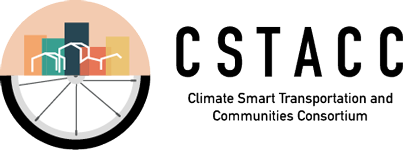Southeast Los Angeles (SELA) Initiative
The SELA region is 62 square miles and includes 11 cities, 4 unincorporated areas, a high proportion of manufacturing and warehousing, and major highway and rail facilities serving port related freight. The population is majority Hispanic, generally low income, and classified by the state’s primary environmental burden mapping tool, CalEnviroScreen, as having high pollution burden. This case study leverages an earlier analysis of the area conducted by USC in 2017 in collaboration with the California State University of Los Angeles Pat Brown Institute and the SELA Collaborative, a partnership of 11 community and non-profit organizations (Giuliano et al, 2018). The research topics below are based on the above-mentioned analysis and community input, including input received from a community summit in 2017 of over 250 local elected officials, civic leaders, and community members:
Access to Public Transit and Clean Transportation
Public transit in the SELA region does not serve the needs of the community. Bus feeder service to rail stations is poor, most bus service is local with long headways (i.e., time between buses), and service reliability is lower than average. In collaboration with the Los Angeles County Metropolitan Transportation Authority, USC will conduct a detailed analysis of transit service in the region and coordinate with the SELA Collaborative to explore the viability of different improvement strategies, such as service/route changes and integration of TNCs and micro- transit services. In addition, UCLA will assess strategies to improve access to clean transportation, including access to electric buses and electric vehicles.
Pedestrian Safety
Pedestrian safety is essential for promoting non-motorized transport and public transport, which are crucial for reducing GHG emissions. A USC-led team will identify pedestrian safety “hot spots” by analyzing pedestrian accident data and working with the community to identify problem areas based on perceived crime risk and accident risk as well as elements of the built environment perceived as dangerous. This information will be used to develop strategies to increase walking and overall security of pedestrians.
Impacts of Heavy-Duty Trucks
The SELA communities face disproportionate impacts from trucks and goods movement due to high truck volumes, truck traffic associated with manufacturing and warehousing, major freight facilities located close to residences, and trucks traveling through residential areas. This research will inform AB 617 (and other policy) initiatives to reduce local pollution impacts and GHGs in the near and long term. Researchers from USC, UCLA, and UC Davis will tackle this challenge through three approaches: 1) develop a model of truck flows within the area to estimate impacts of different alternative vehicle and operational strategies, 2) test and design efficiency strategies (e.g., off-hour distribution, relocation of freight routes, and delivery appointment systems); and 3) formulate science-based policy options for local entities, including cities and the Ports of Los Angeles and Long Beach, to use in reducing truck impacts.
Products
Zero-Emission Drayage Trucks
Improving Environmental Justice and Mobility in Southeast Los Angeles
